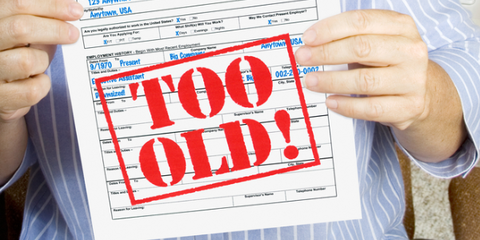Website Design and Internet Marketing
Website Design and Internet MarketingWebsite Design and Internet Marketing
Website Design and Internet MarketingWhat Your Business Needs to Know about Age Discrimination in the Workplace
Age discrimination in the workplace not just exposes a company to expensive legal dangers, but it may also hurt workers' productivity and functionality. Discover what ageism is lawfully and how your company can prevent it.
Age discrimination against older workers is illegal at the U.S. and law will be in place to safeguard workers (and potential workers) within age 40 that could otherwise be disadvantaged just due to their age.
However, regardless of the very clear and unambiguous legal defenses in place to safeguard workers from age discrimination at work, many employees over age 40 still confront ageism at work, which has the potential to cost your organization money in lost productivity and functionality, in addition to exposing one to the very real danger of a legal struggle.
In this guide, we will examine age discrimination at work, share a few facts and statistics about the scope of the issue, and emphasize five things that each company should know about age discrimination and how to block it.
What's age discrimination at work?
Age discrimination at work is the damaging or disadvantageous treatment of workers according to their age instead of merit or performance. While any worker could be targeted at age discrimination involving younger workers protection against age discrimination has been mandated in legislation just for employees over age 40, that's the principal target group for age-based discrimination at work.
Age discrimination figures and facts at Work
Two- 64 percent of employees aged 45 or older have seen or experienced workplace discrimination, based on a study from AARP.
All companies are eager to prevent potentially expensive lawsuit on the grounds of age discrimination at work, however, the threat of a lawsuit is not the sole reason why organizations and companies should have a proactive way of preventing age discrimination on the job.

5. Age discrimination at work may be subtle in addition to overt.
3 quick tips to Avoid age discrimination case
Defending your company from an age discrimination case could be both costly and time-consuming. The financial and time effect that such complaints may have on your business, as well as the lost productivity and wasted company assets, is a massive burden.
These 3 easy tips can help your company mitigate the probability of an age discrimination suit.
1. Provide diversity and discrimination training.
If you would like to safeguard your company against age discrimination claims, it is important to give appropriate training to all workers. Training can help everyone understand what is prohibited under ADEA and offer a solid foundation for suitable policy.
2. Put age-related policies set up and apply them.
When most folks would agree that discrimination of any type isn't right, that does not mean it will not occur. Besides training, it is important to clearly specify policies and establish expectations for what will happen whether a breach occurs.
3. Implement best practices throughout the hiring and interview process.
If your company is prepared to employ for a new location, it is important to employ best practices at the very start of the procedure. When developing your job posting, make certain to avoid phrases which discriminate according to age like "brand new grads" or "young."
Should you require assistance with age discrimination office policies and processes, or when you have any questions regarding age discrimination which you'd love to talk about, contact an employment law lawyer for assistance and advice?
What Your Business Needs to Know about Age Discrimination in the Workplace
Age discrimination in the workplace not just exposes a company to expensive legal dangers, but it may also hurt workers' productivity and functionality. Discover what ageism is lawfully and how your company can prevent it.
Age discrimination against older workers is illegal at the U.S. and law will be in place to safeguard workers (and potential workers) within age 40 that could otherwise be disadvantaged just due to their age.
However, regardless of the very clear and unambiguous legal defenses in place to safeguard workers from age discrimination at work, many employees over age 40 still confront ageism at work, which has the potential to cost your organization money in lost productivity and functionality, in addition to exposing one to the very real danger of a legal struggle.
In this guide, we will examine age discrimination at work, share a few facts and statistics about the scope of the issue, and emphasize five things that each company should know about age discrimination and how to block it.
What's age discrimination at work?
Age discrimination at work is the damaging or disadvantageous treatment of workers according to their age instead of merit or performance. While any worker could be targeted at age discrimination involving younger workers protection against age discrimination has been mandated in legislation just for employees over age 40, that's the principal target group for age-based discrimination at work.
Age discrimination figures and facts at Work
Two- 64 percent of employees aged 45 or older have seen or experienced workplace discrimination, based on a study from AARP.
All companies are eager to prevent potentially expensive lawsuit on the grounds of age discrimination at work, however, the threat of a lawsuit is not the sole reason why organizations and companies should have a proactive way of preventing age discrimination on the job.

5. Age discrimination at work may be subtle in addition to overt.
3 quick tips to Avoid age discrimination case
Defending your company from an age discrimination case could be both costly and time-consuming. The financial and time effect that such complaints may have on your business, as well as the lost productivity and wasted company assets, is a massive burden.
These 3 easy tips can help your company mitigate the probability of an age discrimination suit.
1. Provide diversity and discrimination training.
If you would like to safeguard your company against age discrimination claims, it is important to give appropriate training to all workers. Training can help everyone understand what is prohibited under ADEA and offer a solid foundation for suitable policy.
2. Put age-related policies set up and apply them.
When most folks would agree that discrimination of any type isn't right, that does not mean it will not occur. Besides training, it is important to clearly specify policies and establish expectations for what will happen whether a breach occurs.
3. Implement best practices throughout the hiring and interview process.
If your company is prepared to employ for a new location, it is important to employ best practices at the very start of the procedure. When developing your job posting, make certain to avoid phrases which discriminate according to age like "brand new grads" or "young."
Should you require assistance with age discrimination office policies and processes, or when you have any questions regarding age discrimination which you'd love to talk about, contact an employment law lawyer for assistance and advice?





